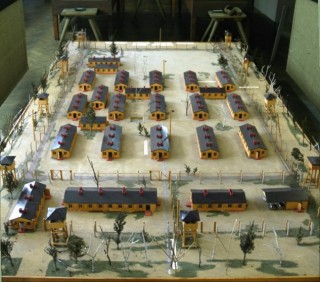
Once every month I meet with a men’s group at Villa Springfield on Villa Road, in Springfield, Ohio. I have been volunteering to do this for nearly two years now. There are a few regular attendees that are brought to me each time, and occasionally there are some new faces in the group. Today, there were two new faces, and one gentleman in particular got my attention.
His name is John Zirkle, and John was a B-17 tail-gunner in the Army Air Corps during WWII. He was assigned to the 8th Air Force and was stationed at Dolphin Green, England.
On March 23rd, 1943, John was on his 9th mission over Germany when his plane was attacked by German ME-109’s. As a tail gunner, John could only see out the rear of the plane and what he saw that day befuddled him to say the least. Suddenly, after the attack by German fighters, from the rear of the plane, John saw a string of men with parachutes opened, floating away from the plane. He turned to discover an empty plane with the side door opened where the rest of his crew had jumped out. He also discovered a helmet that had been tossed in his direction to get his attention revealing that nine members of his ten member crew were abandoning the plane. John quickly followed suit.
After safely parachuting down, John was taken captive, placed on a boxcar, and shipped to Barth, a city located in northern Germany near the Baltic Sea.
During World War II, Barth was the site of a German prisoner of war camp, Stalag Luft I, a camp used for captured Allied airmen. The presence of the prison camp is said to have shielded the town from Allied bombing.
John related to me that he was two weeks short of being in that camp for a total of 14 months. He told me that he was fortunate to have been placed with the officers where the conditions were a little better. He said that about every two weeks, he and others would get Red Cross packages containing spam, raisins, cigarettes, etc. He also said the German guards would punch holes in the cans so that if anyone tried to escape, they could not take the food with them.
The prison camp was liberated by the Russians at the end of May, 1945, and John told me that these Russians were led by a female Captain riding a white horse. He was then shipped to Camp Lucky Strike in France and then home for rehabilitation.
I asked John if he had ever suffered from flashbacks or depression after the war, as so many GI’s did, and he said that he never did.
John was a very easy going fellow who was not bashful about telling me his experiences. I always enjoy the stories, and I always appreciate the men who tell them.
Randy Ark
ATTENTION READERS
We See The World From All Sides and Want YOU To Be Fully InformedIn fact, intentional disinformation is a disgraceful scourge in media today. So to assuage any possible errant incorrect information posted herein, we strongly encourage you to seek corroboration from other non-VT sources before forming an educated opinion.
About VT - Policies & Disclosures - Comment Policy



